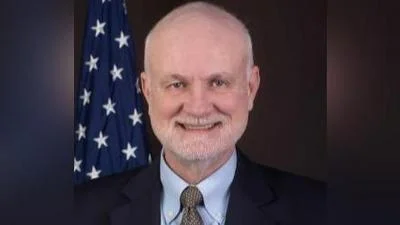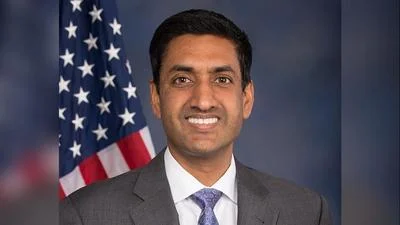John Taylor, Professor of Economics at Stanford University and developer of the "Taylor Rule" for setting interest rates | Stanford University
John Taylor, Professor of Economics at Stanford University and developer of the "Taylor Rule" for setting interest rates | Stanford University
Researchers at Stanford University have made significant progress in understanding and potentially reversing chemotherapy resistance in pancreatic cancer. Their findings, published on July 4 in Nature Materials, reveal that the physical stiffness of tissue around cancerous cells and its chemical makeup contribute to this resistance.
"We found that stiffer tissue can cause pancreatic cancer cells to become resistant to chemotherapy, while softer tissue made the cancer cells more responsive to chemotherapy," said Sarah Heilshorn, a professor of materials science and engineering at Stanford and senior author on the paper. "These results suggest an exciting new direction for future drug development to help overcome chemoresistance, which is a major clinical challenge in pancreatic cancer."
The research focused on pancreatic ductal adenocarcinoma (PDAC), which accounts for 90% of pancreatic cancer cases. In these cancers, the extracellular matrix—the network of materials between cells—becomes notably stiffer. Previous theories suggested this stiff material blocked chemotherapy drugs from reaching cancerous cells, but treatments based on this idea have not been effective.
Heilshorn collaborated with PhD student Bauer LeSavage to develop a system mimicking both healthy pancreas tissues and pancreatic tumors' biochemical and mechanical properties. They used these models to culture cells from pancreatic cancer patients provided by Calvin Kuo, Maureen Lyles D’Ambrogio Professor at Stanford Medicine.
"We created a designer matrix that would allow us to test the idea that these cancerous cells might be responding to the chemical signals and mechanical properties in the matrix around them," Heilshorn said.
The study found that two factors are required for PDAC's chemoresistance: a physically stiff extracellular matrix and high amounts of hyaluronic acid—a polymer interacting with cells through a receptor called CD44. Initially responsive to chemotherapy, the PDAC cells eventually became resistant by producing proteins capable of expelling chemotherapy drugs quickly.
The researchers discovered they could reverse this resistance by either moving the cells to a softer matrix or blocking the CD44 receptor. "We can revert the cells back to a state where they are sensitive to chemotherapy," Heilshorn noted. "This suggests that if we can disrupt the stiffness signaling that's happening through the CD44 receptor, we could make patients' pancreatic cancer treatable by normal chemotherapy."
This finding was unexpected as other cancers typically interact with their extracellular matrix via integrin receptors rather than CD44 receptors. The team plans further investigation into CD44’s role and related biological mechanisms leading to chemoresistance.
In addition, efforts are underway to enhance their cell culture model by adding different cell types and exploring other mechanical properties beyond stiffness. The aim is not only advancing treatment options for chemoresistant pancreatic cancer but also emphasizing realistic models’ importance in developing effective therapies.
"When we design chemotherapies, we should be testing our cultures in matrices that are relevant to a patient," Heilshorn stated. "Because it matters – the way cells respond to drugs depends on the matrix that's around them."
Additional co-authors include Christina Curtis; Paul Bollyky; senior research scientist Gernot Kaber; research technician Kremena Karagyozova; postdoctoral researchers Carla Huerta-López, Aidan E. Gilchrist, Kasper Karlsson, Amber R. Smith, Christopher M. Madl; graduate students Bauer L. LeSavage, Daiyao Zhang, Brad A. Krajina, Katarina C. Klett, Michelle S. Huang, Christopher Long.
Funding was provided by National Institutes of Health (NIH), Stand Up To Cancer (SU2C), Cancer Research UK (CRUK), and National Science Foundation (NSF).
For further information:
Jill Wu
School of Engineering
jillwu@stanford.edu
© Copyright Stanford University




 Alerts Sign-up
Alerts Sign-up